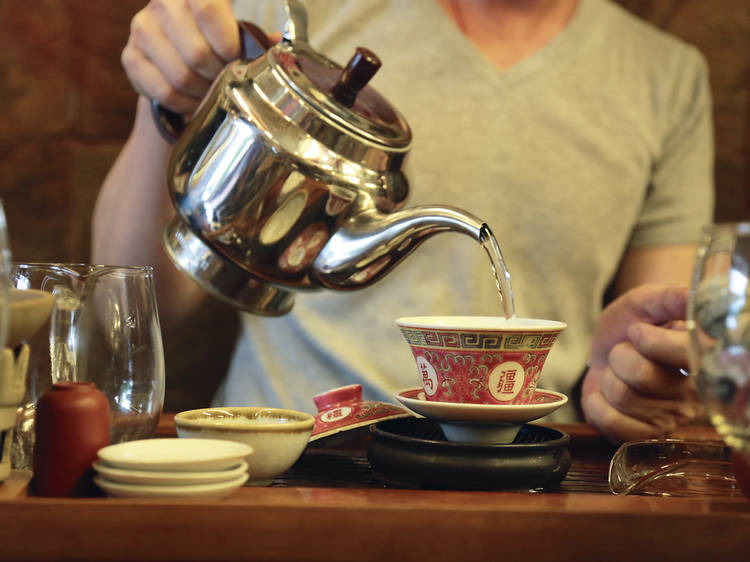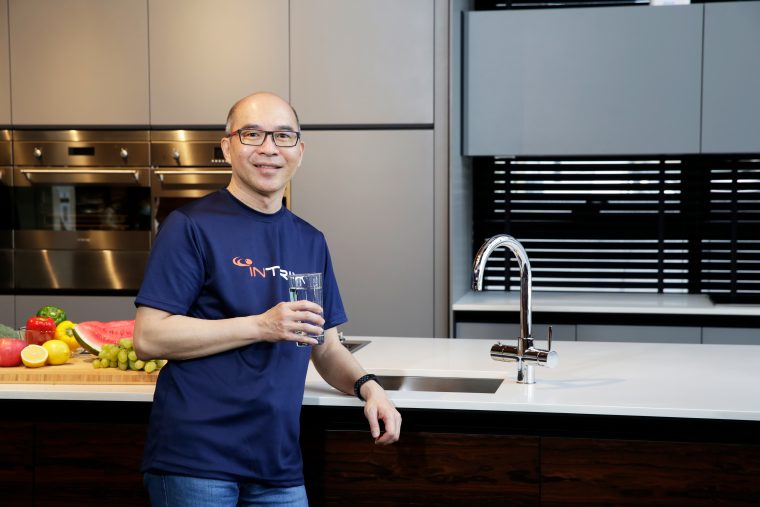
According to researchers, the average Malaysian consumes about 2.5 cups of coffee per day. At least twice a day, we go down to our kitchens and stand around awkwardly while waiting for the hot water to boil.
And it’s not just for coffee, it seems!
Think about it — how much energy do you waste every day waiting for hot water to brew your coffee, tea, Milo, etc.? And I don’t just mean physically either. Just how much do all these kettles of hot water add to your electricity bill?
Boiling Water Without Wasting Electricity

To answer this question, The Full Frontal spoke to Tee Tone Vei, the Founder and Managing Director of Intrix Group. He has dedicated the past 28 years of his life to changing the way society uses our most essential resources: water and electricity.
“One of our big projects was the First World Hotel in Genting,” he said. “It was the new Tower 3 extension, which has 1,300 rooms. Genting wanted to use renewable energy to heat up the water for their showers, so we designed a large centralised system that extracted heat from the ambient air.”
How Can You Produce Heat Out of Thin Air?

Pulling energy out of thin air sounds like something out of a sci-fi movie, but Tee and his team made it work.
“The challenge is in heating water in the most efficient way possible to minimise harm to the environment,” he said.
To create a powerful yet energy efficient water heating network, they designed the Intrix One Pass Heat Pump system.
It’s basically a “fridge in reverse”; instead of sucking the heat out of an area and pumping it outside, it does the opposite.
A series of fans suck up air from outside and moves it through a network of metal fins. The ambient heat in the air is then used to warm up cold water stored inside a tank, creating hot water without using any conventional gas or electric heaters.
This heating system was so innovative that it was recognised by the Malaysian Book of Records as the “Largest Renewable Hot Water System”.
“By foregoing traditional fossil fuel-based boiler systems, Tower 3 ended up enjoying more than a threefold gain in efficiency, saving up to 72% of energy,” said Tee.
Bringing Green Heating Into Our Homes

The Intrix One Pass Heat Pump system was designed for a hotel. But that doesn’t mean that our homes can’t benefit from green heating technology.
“If you look at consumer behaviour, people use a kettle for two purposes: to get drinking water and to get hot water,” Tee explained.
“A lot of Malaysians don’t like to drink straight from the tap. So we’ll use a kettle to boil the water. But we want our drinking water to be cold, so we’ll heat it up and then let it cool down. When we use a kettle like this, we waste a lot of electricity.”
“For hot drinks, we use the kettle to heat it up. But you will never heat up just enough for a single cup of tea.”
“You will always boil either a lot more or a lot less than you need. Whatever you don’t use is wasted.”
To create a more energy efficient way of generating hot water, Tee’s company recently released the Intrix Reinz Plus. It’s a hot water tap that can dispense purified drinking water and purified hot water straight from the tap. No more messing about with kettles and heaters!
“It’s not just for making hot beverages,” Tee said. “We can use it to cook, to blanch vegetables, sterilise milk bottles, degrease dirty dishes and many more applications.”
So How Does It Work?

To put it simply, the Intrix Reinz Plus has a small reservoir of water that’s pre-heated to 98°C. There’s a sensor that notices when you want to pour out some hot water and continuously generates heat to ensure that you can get as much as you need.
“A lot of hot water systems take time to heat up, so when you use it, the first cup is not as hot as the second cup,” noted Tee. “But we wanted to make sure that every single cup is just as hot from the first to the last.”
But why 98°C? If you want hot water, why not 100°C?
The short answer: to save energy.
“Turning water into steam actually takes a lot more energy than just heating up water,” he said. “That’s why we leave it at 98°C. Not only is it safer — because you won’t have any steam or sputter — but it also has got a big impact on energy efficiency.”
Managing Your Waste

If you already have a water purifier at home, you’ll know that the filter needs to be changed every so often. This process is not only annoying but also generates a lot more waste than you might expect.
“If you look at the water purification market in Malaysia, the industry throws out around twelve million filter cartridges a year!” said Tee. “And these are very high quality plastic materials, which means that they’ll take a long, long time to degrade.”
For Tee, this was one of the biggest challenges to designing an environmentally-friendly water heating system.
“We wanted to reduce this waste. Instead of throwing out seven cartridges a year (which is the average for a good water purification system), we designed everything in one cartridge with a longer life span. It’s not rocket science — rather than having the mindset of ‘more cartridges’, we combined everything into one.”
Of course, even one cartridge a year can add up over time, which is why Tee has plans to recycle used cartridges instead of throwing them away.
“We can’t reuse it as a filter again, but we can still recycle the material it’s made from,” he pointed out.
Made By Malaysians, For Malaysians

Despite what some may think, overseas products aren’t always better. Unlike many Malaysian companies, Intrix isn’t focused on importing talent and technology from other countries. Instead, it’s the opposite — products like the Intrix Reinz Plus are 100% Malaysian made and designed.
“We are one of the rare Malaysian companies that exports our technology and know-how… rather than the other way around.” Tee said proudly.
As far as he’s concerned, Malaysia has no shortage of talent.
“Are our engineers inferior to foreign engineers? I say no.” he said. “When we do work with people from the US or UK, I don’t think our engineers are worse than them. In fact, in some cases they’re even better!”
Over the years, Malaysia has produced many talented scientists and engineers, some of which have gone on to change the world! If you’re interested in learning more about some of our country’s most famous inventions, be sure to check out:
5 Malaysian Inventions That Changed The World









